Stealth aircraft
Stealth aircraft
From Wikipedia, the free encyclopedia
Stealth aircraft are designed to avoid detection using a variety of stealth technologies that reduce reflection/emission of radar, infrared,[1]visible light, radio-frequency (RF) spectrum, and audio, collectively known as stealth technology.[2] Development of stealth technology likely began in Germany during World War II, the prototyped Horten Ho 229 powered by twin BMW 003 jet engines being described as the first stealth aircraft.[3] Well-known modern examples of stealth of U.S. aircraft include the United States' F-117 Nighthawk (1981–2008), the B-2 Spirit, the F-22 Raptor,[4] and the F-35 Lightning II.[5]
While no aircraft is totally invisible to radar, stealth aircraft make it more difficult for conventional radar to detect or track the aircraft effectively, increasing the odds of an aircraft successfully avoiding detection by enemy radar and/or avoiding being successfully targeted by radar guided weapons. Stealth is the combination of passive low observable (LO) features and active emitters such as Low Probability of Intercept Radars, radios and laser designators. These are usually combined with active measures such as carefully planning all mission maneuvers in order to minimize the aircraft's radar cross section, since common actions such as hard turns or opening bomb bay doors can more than double an otherwise stealthy aircraft's radar return.[6] It is accomplished by using a complex design philosophy to reduce the ability of an opponent's sensors to detect, track, or attack the stealth aircraft.[7] This philosophy also takes into account the heat, sound, and other emissions of the aircraft as these can also be used to locate it.
Full-size stealth combat aircraft demonstrators have been flown by the United States (in 1977), Russia (in 2010) and China (in 2011).[8] The U.S. military has adopted three stealth designs, and is preparing to adopt the Lockheed Martin F-35 Lightning II.
Most recent fighter designs will claim to have some sort of stealth, low observable, reduced RCS or radar-jamming capability, but there has been no air-to-air combat experience against stealth aircraft.[9][not in citation given]
Contents
[hide]- 1Background
- 2General design
- 3Limitations
- 3.1Instability of design
- 3.2Aerodynamic limitations
- 3.3Electromagnetic emissions
- 3.4Vulnerable modes of flight
- 3.5Reduced payload
- 3.6Sensitive skin
- 3.7Cost of operations
- 3.8Reflected waves
- 3.9Schlieren Signature
- 3.10Infrared (heat)
- 3.11Longer Wavelength Radar
- 3.12OTH radar (over-the-horizon radar)
- 3.13Advancements in computational power
- 4Operational usage of stealth aircraft
- 5Stealth aircraft lost
- 6List of stealth aircraft
- 7See also
- 8References
Background[edit]
World War I and World War II[edit]
During World War I, the Germans experimented with the use of Cellon (Cellulose acetate), a transparent covering material, in an attempt to reduce the visibility of military aircraft. Single examples of the Fokker E.III Eindecker fighter monoplane, the Albatros C.I two-seat observation biplane, and the Linke-Hofmann R.I prototype heavy bomber were covered with Cellon. In fact, sunlight glinting from the material made the aircraft even more visible. Celon was also found to be quickly degraded both by sunlight and in-flight temperature changes so the attempt to make transparent aircraft was not proceeded with.[10]
In 1916, the British modified a small SS class airship for the purpose of night-time aerial reconnaissance over German Empire lines on the Western Front. Fitted with a silenced engine and a black gas bag, the craft was both invisible and inaudible from the ground, but several night-time flights over German-held territory produced little useful intelligence, and the idea was dropped.[11]
Nearly three decades later, a more serious attempt at radar "invisibility" was tried with the Horten Ho 229 flying wing fighter-bomber, developed in Nazi Germany during the last years of World War II. In addition to the aircraft's shape, the majority of the Ho 229's wooden skin was bonded together using carbon-impregnated plywood resins designed with the purported intention of absorbing radar waves. Testing performed in early 2009 by the Northrop-Grumman Corporation established that this compound, along with the aircraft's shape, would have rendered the Ho 229 virtually invisible to the top-end HF-band, 20-30 MHz primary signals of Britain's Chain Home early warning radar, provided the aircraft was traveling at high speed (approximately 550 mph (890 km/h)) at extremely low altitude - 50–100 feet (15–30 m).[3]
In the closing weeks of World War II, the US military initiated "Operation Paperclip", an effort by the US Army to capture as much advanced German Wunderwaffe weapons research as possible, and also to deny that research to advancing Red Army. A Horten glider and the nearly complete Ho 229 V3 third prototype airframe were secured and sent to Northrop Corporation for evaluation in the United States,[3] who much later used a flying wing design for the B-2 stealth bomber. During World War II, Northrop had been commissioned to develop a large wing-only long-range bomber (Northrop YB-35) based on photographs of the Horten's record-setting glider from the 1930s, but their initial designs suffered controllability issues that were not resolved until after the war. Northrop's small one-man prototype (N9M-B) and a Horten wing-only glider are now preserved at the Chino Air Museum in Southern California.
Modern era[edit]
Modern stealth aircraft first became possible when Denys Overholser, a mathematician working for Lockheed Aircraft during the 1970s, adopted a mathematical model developed by Petr Ufimtsev, a Soviet scientist, to develop a computer program called Echo 1. Echo made it possible to predict the radar signature an aircraft made with flat panels, called facets. In 1975, engineers at Lockheed Skunk Works found that an aircraft made with faceted surfaces could have a very low radar signature because the surfaces would radiate almost all of the radar energy away from the receiver. Lockheed built a model called "the Hopeless Diamond", so-called because it resembled a squat diamond, and looked too hopeless to ever fly. Because advanced computers were available to control the flight of even a Hopeless Diamond, for the first time designers realized that it might be possible to make an aircraft that was virtually invisible to radar.[12][13]
Reduced radar cross section is only one of five factors the designers addressed to create a truly stealthy design such as the F-22. The F-22 has also been designed to disguise its infrared emissions to make it harder to detect by infrared homing ("heat seeking") surface-to-air or air-to-air missiles. Designers also addressed making the aircraft less visible to the naked eye, controlling radio transmissions, and noise abatement.[4]
The first combat use of purpose-designed stealth aircraft was in December 1989 during Operation Just Cause in Panama. On 20 December 1989, two United States Air Force F-117s bombed a Panamanian Defense Force barracks in Rio Hato, Panama. In 1991, F-117s were tasked with attacking the most heavily fortified targets in Iraq in the opening phase of Operation Desert Storm and were the only jets allowed to operate inside Baghdad's city limits.[14]
General design[edit]
Main article: Aircraft design process
The general design of a stealth aircraft is always aimed at reducing radar and thermal detection. It is the designer's top priority to satisfy the following conditions; some of which are listed below, by using their skills, which ultimately decides the success of the aircraft:-
- Reducing thermal emission from thrust
- Reducing radar detection by altering some general configuration (like introducing the split rudder)
- Reducing radar detection when the aircraft opens its weapons bay
- Reducing infra-red and radar detection during adverse weather conditions
Limitations[edit]
Instability of design[edit]
Early stealth aircraft were designed with a focus on minimal radar cross section (RCS) rather than aerodynamic performance. Highly-stealth aircraft like the F-117 Nighthawk are aerodynamically unstable in all three axes and require constant flight corrections from a fly-by-wire (FBW) flight system to maintain controlled flight.[15] As for the B-2 Spirit, which was based on the development of the flying wing aircraft[16] by Jack Northrop in 1940, this design allowed for a stable aircraft with sufficient yaw control, even without vertical surfaces such as rudders.
Aerodynamic limitations[edit]
Earlier stealth aircraft (such as the F-117 and B-2) lack afterburners, because the hot exhaust would increase their infrared footprint, and flying faster than the speed of sound would produce an obvious sonic boom, as well as surface heating of the aircraft skin which also increased the infrared footprint. As a result their performance in air combat maneuvering required in a dogfight would never match that of a dedicated fighter aircraft. This was unimportant in the case of these two aircraft since both were designed to be bombers. More recent design techniques allow for stealthy designs such as the F-22 without compromising aerodynamic performance. Newer stealth aircraft, like the F-22, F-35 and the Sukhoi T-50, have performance characteristics that meet or exceed those of current front-line jet fighters due to advances in other technologies such as flight control systems, engines, airframe construction and materials.[4][17]
Electromagnetic emissions[edit]
The high level of computerization and large amount of electronic equipment found inside stealth aircraft are often claimed to make them vulnerable to passive detection. This is highly unlikely and certainly systems such as Tamara and Kolchuga, which are often described as counter-stealth radars, are not designed to detect stray electromagnetic fields of this type. Such systems are designed to detect intentional, higher power emissions such as radar and communication signals. Stealth aircraft are deliberately operated to avoid or reduce such emissions.[citation needed]
Current Radar Warning Receivers look for the regular pings of energy from mechanically swept radars while fifth generation jet fighters use Low Probability of Intercept Radarswith no regular repeat pattern.[18]
Vulnerable modes of flight[edit]
Stealth aircraft are still vulnerable to detection during, and immediately after using their weaponry. Since stealth payload (reduced RCS bombs and cruise missiles) are not yet generally available, and ordnance mount points create a significant radar return, stealth aircraft carry all armaments internally. As soon as weapons bay doors are opened, the plane's RCS will be multiplied and even older generation radar systems will be able to locate the stealth aircraft. While the aircraft will reacquire its stealth as soon as the bay doors are closed, a fast response defensive weapons system has a short opportunity to engage the aircraft.
This vulnerability is addressed by operating in a manner that reduces the risk and consequences of temporary acquisition. The B-2's operational altitude imposes a flight time for defensive weapons that makes it virtually impossible to engage the aircraft during its weapons deployment[citation needed]. New stealth aircraft designs such as the F-22 and F-35 can open their bays, release munitions and return to stealthy flight in less than a second[citation needed].
Some weapons[specify] require that the weapon's guidance system acquire the target while the weapon is still attached to the aircraft. This forces relatively extended operations with the bay doors open.
Also, such aircraft as the F-22 Raptor and F-35 Lightning II Joint Strike Fighter can also carry additional weapons and fuel on hardpoints below their wings. When operating in this mode the planes will not be nearly as stealthy, as the hardpoints and the weapons mounted on those hardpoints will show up on radar systems. This option therefore represents a trade off between stealth or range and payload. External stores allow those aircraft to attack more targets further away, but will not allow for stealth during that mission as compared to a shorter range mission flying on just internal fuel and using only the more limited space of the internal weapon bays for armaments.
Reduced payload[edit]
Fully stealth aircraft carry all fuel and armament internally, which limits the payload. By way of comparison, the F-117 carries only two laser or GPS guided bombs, while a non-stealth attack aircraft can carry several times more. This requires the deployment of additional aircraft to engage targets that would normally require a single non-stealth attack aircraft. This apparent disadvantage however is offset by the reduction in fewer supporting aircraft that are required to provide air cover, air-defense suppression and electronic counter measures, making stealth aircraft "force multipliers".
Sensitive skin[edit]
Main article: Skin (aeronautics)
Stealth aircraft often have skins made with Radar-absorbent materials or RAMs. Some of these contain Carbon black particles, some contain tiny iron spheres. There are many materials used in RAMs, and some are classified, particularly the materials that specific aircraft use.[19]
Cost of operations[edit]
Stealth aircraft are typically more expensive to develop and manufacture. An example is the B-2 Spirit that is many times more expensive to manufacture and support than conventional bomber aircraft. The B-2 program cost the U.S. Air Force almost $45 billion.[20]
Reflected waves[edit]
Main articles: Radar and Radio wave
Passive (multistatic) radar, bistatic radar[21] and especially multistatic radar systems detect some stealth aircraft better than conventional monostatic radars, since first-generation stealth technology (such as the F117) reflects energy away from the transmitter's line of sight, effectively increasing the radar cross section (RCS) in other directions, which the passive radars monitor. Such a system typically uses either low frequency broadcast TV and FM radio signals (at which frequencies controlling the aircraft's signature is more difficult). Later stealth approaches do not rely on controlling the specular reflections of radar energy and so the geometrical benefits are unlikely to be significant.
Researchers at the University of Illinois at Urbana-Champaign with support of DARPA, have shown that it is possible to build a synthetic aperture radar image of an aircraft target using passive multistatic radar, possibly detailed enough to enable automatic target recognition (ATR).
In December 2007, SAAB researchers revealed details for a system called Associative Aperture Synthesis Radar (AASR) that would employ a large array of inexpensive and redundant transmitters and a few intelligent receivers to exploit forward scatter to detect low observable targets.[22] The system was originally designed to detect stealthy cruise missiles and should be just as effective against aircraft. The large array of inexpensive transmitters provides a degree of protection against anti-radar (or anti-radiation) missiles or attacks.
Schlieren Signature[edit]
Schlieren is the German plural of schliere, which is German for the English word streak. Schlieren are visible streaks produced in a transparent medium as a result of variations in the medium's density leading to variations in refractive index.[23] Anything that disturbs the atmosphere may be detected (Schlieren Photography) because of the Schlieren effect caused by that atmospheric disturbance. This type of Measurement and signature intelligence (MASINT) detection falls under the category of Electro-optical MASINT. A telephoto or telescopic picture of a jet passing between the photographer and a full moon will sometimes show the outline of the aircraft as well as the atmospheric distortions of the exhaust plumes. This passive principle can be used at all wavelengths of the electromagnetic spectrum. Passive signature intelligence has captured stealth aircraft in flight by accident, when such aircraft fly between Earth imaging satellites and ground (can be seen in products like Google Earth). Once a stealth signature has been captured, it may be loaded into a database library for an active and live satellite search at any point in the future. Ground at past versus ground at present differential comparisons can be made to determine flight paths and altitudes of stealth aircraft. This disturbance and disturbing influence method has been used for finding ships at sea through wake generation tracking and even in Wilson cloud chambers for particle discovery and tracking. The key principle is that the disturbance is much more visible in area and volume than the disturbing point source and converges attention to the much smaller disturbing source.
Infrared (heat)[edit]
Main article: Infrared signature
Some analysts claim Infra-red search and track systems (IRSTs) can be deployed against stealth aircraft, because any aircraft surface heats up due to air friction and with a two channel IRST is a CO2 (4.3 µm absorption maxima) detection possible, through difference comparing between the low and high channel.[24][25] These analysts point to the resurgence in such systems in Russian designs in the 1980s, such as those fitted to the MiG-29 and Su-27. The latest version of the MiG-29, the MiG-35, is equipped with a new Optical Locator System that includes more advanced IRST capabilities. The French Rafale and Swedish Gripen also make extensive use of IRST.
In air combat, the optronic suite allows:
- Detection of non-afterburning targets at 45-kilometre (28 mi) range and more;
- Identification of those targets at 8-to-10-kilometre (5.0 to 6.2 mi) range; and
- Estimates of aerial target range at up to 15 kilometres (9.3 mi).
For ground targets, the suite allows:
- A tank-effective detection range up to 15 kilometres (9.3 mi), and aircraft carrier detection at 60 to 80 kilometres (37 to 50 mi);
- Identification of the tank type on the 8-to-10-kilometre (5.0 to 6.2 mi) range, and of an aircraft carrier at 40 to 60 kilometres (25 to 37 mi); and
- Estimates of ground target range of up to 20 kilometres (12 mi).
Longer Wavelength Radar[edit]
Main articles: Radio spectrum § IEEE and Very high frequency
VHF radar systems have wavelengths comparable to aircraft feature sizes and should exhibit scattering in the resonance region rather than the optical region, allowing most stealth aircraft to be detected. This has prompted Nizhny Novgorod Research Institute of Radio Engineering (NNIIRT) to develop VHF AESAs such as the NEBO SVU, which is capable of performing target acquisition for Surface-to-air missile batteries. Despite the advantages offered by VHF radar, their longer wavelengths result in poor resolution compared to comparably sized X band radar array. As a result, these systems must be very large before they can have the resolution for an engagement radar.
The Dutch company Thales Nederland, formerly known as Holland Signaal, developed a naval phased-array radar called SMART-L, which is operated at L Band and has counter-stealth. All ships of the Royal Dutch Navy's De Zeven Provinciën class carry, amongst others, theSMART-L radar.
OTH radar (over-the-horizon radar)[edit]
Over-the-horizon radar is a concept increasing radar's effective range over conventional radar. The Australian JORN Jindalee Operational Radar Network can overcome certain stealth characteristics.[26] It is claimed that the HF frequency used and the method of bouncing radar from ionosphere overcomes the stealth characteristics of the F-117A. In other words, stealth aircraft are optimized for defeating much higher-frequency radar from front-on rather than low-frequency radars from above.
Advancements in computational power[edit]
The stealth platforms may have slower advances in materials technology and physical limits so that further advances in stealth become either impossible or unaffordable. This may force future stealth platforms to stand off from their targets and use active countermeasures and long range weaponry to strike targets.[27]
However if the stealth aircraft are constantly upgraded they can hope to jam or evade emerging threats better than similarly equipped non-stealthy platforms could.[28][29]
Operational usage of stealth aircraft[edit]
The U.S. is the only country to have used stealth aircraft in combat. These deployments include the United States invasion of Panama, the first Gulf War, the Kosovo Conflict, the War in Afghanistan the War in Iraq and the 2011 military intervention in Libya. The first use of stealth aircraft was in the U.S. invasion of Panama, where F-117 Nighthawk stealth attack aircraft were used to drop bombs on enemy airfields and positions while evading enemy radar.[30]
In 1990 the F-117 Nighthawk was used in the First Gulf War, where F-117s flew 1,300 sorties and scored direct hits on 1,600 high-value targets in Iraq[31]while accumulating 6,905 flight hours.[32] Only 2.5% of the American aircraft in Iraq were F-117s, yet they struck 40% of the strategic targets, dropping 2,000 tons of precision-guided munitions and striking their targets with an 80% success rate.[32][33]
In the 1999 NATO bombing of Yugoslavia two stealth aircraft were used by the United States, the veteran F-117 Nighthawk, and the newly introduced B-2 Spirit strategic stealth bomber. The F-117 performed its usual role of striking precision high-value targets and performed well, although one F-117 was shot down by a Serbian Isayev S-125 'Neva-M' missile commanded by Colonel Zoltán Dani. The, then new, B-2 Spirit was highly successful, destroying 33% of selected Serbian bombing targets in the first eight weeks of U.S. involvement in the War. During this war, B-2s flew non-stop to Kosovo from their home base in Missouri and back.[34]
In the 2003 invasion of Iraq, F-117 Nighthawks and B-2 Spirits were used, and this was the last time the F-117 would see combat. F-117s dropped satellite-guided strike munitions on selected targets, with high success. B-2 Spirits conducted 49 sorties in the invasion, releasing 1.5 million pounds of munitions.[34]
During the May 2011 operation to kill Osama bin Laden, one of the helicopters used to clandestinely insert US troops into Pakistan crashed in the bin Laden compound. From the wreckage it was revealed this helicopter had stealth characteristics, making this the first publicly known operational use of a stealth helicopter.
Stealth aircraft were used in the 2011 military intervention in Libya, whe B-2 Spirits dropped 40 bombs on a Libyan airfield with concentrated air defenses in support of the UN no-fly zone.[35]
Stealth aircraft will continue to play a valuable role in air combat with the United States using the F-22 Raptor, B-2 Spirit, and the F-35 Lightning II to perform a variety of operations.[citation needed]
The Russian Sukhoi PAK FA stealth multi-role fighter is scheduled to be introduced from 2015, to perform various missions.[citation needed]
The Sukhoi/HAL FGFA, the Indian version of the PAK FA is scheduled to be introduced from 2017 in higher numbers, also to perform various missions.[citation needed]
The People's Republic of China plans to introduce the Chengdu J-20 stealth multirole fighter around 2018. A prototype was flown in early 2011.[citation needed] Another fifth-generation stealth multirole fighter Shenyang J-31 is also under flight testing.
Stealth aircraft lost[edit]
The first time that a stealth aircraft was shot down was on 27 March 1999, during Operation Allied Force when an American F-117 Nighthawkwas brought down by an Isayev S-125 'Neva-M' missile launched by a Serbian Air Defense crew who were operating their radars on unusually long wavelengths.[36][37] The pilot ejected and was rescued and the aircraft remained relatively intact due to slowly striking the ground, inverted.[36]
In December 2011, Iranian sources showed videos of a captured US RQ-170 stealth drone in a good shape with intact central controlling unit.[38] The information was later confirmed by US sources. The analysts say that the drone might have been captured by electronic cyber attack or jamming.[39] There are reports that China and Russia asked Iran to inspect the drone less than a week after the Iranian video was released.[40]
A B-2 crashed on 23 February 2008 shortly after takeoff from Andersen Air Force Base in Guam.[41] The investigation stated the B-2 crashed after "heavy, lashing rains" caused water to enter skin-flush air-data sensors, which feed angle of attack and yaw data to the computerized flight-control system. The water distorted pre-flight readings in three of the plane's 24 sensors, causing the flight-control system to send an erroneous correction to the B-2 on takeoff. The B-2 quickly stalled, became unrecoverable, and crashed.[42][43][44]The sensors measure environmental factors including air pressure and density, for data to calculate airspeed, altitude and attitude. Because of the faulty readings, the flight computers determined inaccurate airspeed readings and incorrectly indicated a downward angle for the aircraft, which contributed to an early rotation and an un-commanded 30-degree pitch up and left yaw, resulting in the stall.[45]
List of stealth aircraft[edit]
Manned[edit]
Dedicated reduced cross section designs[edit]
- In service
 B-2 Spirit – Northrop Grumman
B-2 Spirit – Northrop Grumman F-22 Raptor – Lockheed Martin / Boeing
F-22 Raptor – Lockheed Martin / Boeing F-35 Lightning II – Lockheed Martin / BAE Systems / Northrop Grumman
F-35 Lightning II – Lockheed Martin / BAE Systems / Northrop Grumman
- Retired
- Under development
 PAK FA – Sukhoi
PAK FA – Sukhoi
 FGFA – Sukhoi / HAL
FGFA – Sukhoi / HAL Chengdu J-20 – Chengdu Aircraft Corporation
Chengdu J-20 – Chengdu Aircraft Corporation Shenyang J-31 - Shenyang Aircraft Corporation
Shenyang J-31 - Shenyang Aircraft Corporation AMCA – ADA / HAL
AMCA – ADA / HAL TAI TFX - Turkish Aerospace Industries
TAI TFX - Turkish Aerospace Industries HESA Shafaq - HESA / IAMI
HESA Shafaq - HESA / IAMI Qaher-313
Qaher-313 Flygsystem 2020 - Saab
Flygsystem 2020 - Saab Mikoyan LMFS - Mikoyan
Mikoyan LMFS - Mikoyan
- Conceptual
- Cancelled
 A-12 Avenger II – McDonnell-Douglas / General Dynamics
A-12 Avenger II – McDonnell-Douglas / General Dynamics Boeing X-32 – Boeing prototype
Boeing X-32 – Boeing prototype YF-23 Black Widow II – Northrop / McDonnell Douglas prototype
YF-23 Black Widow II – Northrop / McDonnell Douglas prototype MBB Lampyridae – West German stealth fighter prototype[46]
MBB Lampyridae – West German stealth fighter prototype[46] RAH-66 Comanche – Boeing Sikorsky
RAH-66 Comanche – Boeing Sikorsky Horten Ho 229 – Flying wing turbojet fighter prototype test in 1944. Project cancelled in 1945 due to the worsening war situation.[47]
Horten Ho 229 – Flying wing turbojet fighter prototype test in 1944. Project cancelled in 1945 due to the worsening war situation.[47]
- Technology demonstrators
 BAE Replica – BAE Systems
BAE Replica – BAE Systems YF-22 - Developed into F22 Raptor
YF-22 - Developed into F22 Raptor YF-23 Black Widow II – Northrop / McDonnell Douglas prototype
YF-23 Black Widow II – Northrop / McDonnell Douglas prototype Boeing Bird of Prey – Boeing
Boeing Bird of Prey – Boeing Have Blue – Lockheed
Have Blue – Lockheed Mitsubishi ATD-X – Mitsubishi Heavy Industries
Mitsubishi ATD-X – Mitsubishi Heavy Industries Northrop Tacit Blue – Northrop
Northrop Tacit Blue – Northrop MiG 1.44 – Russian 5th generation fighter prototype
MiG 1.44 – Russian 5th generation fighter prototype X-35 - JSF winning contender developed into F-35 Lightning II
X-35 - JSF winning contender developed into F-35 Lightning II X-32 - JSF losing contender
X-32 - JSF losing contender
Accidental or secondary function reduced cross section designs[edit]
 Avro Vulcan – British strategic bomber with delta wing and buried engines that gave an unplanned low radar cross-section
Avro Vulcan – British strategic bomber with delta wing and buried engines that gave an unplanned low radar cross-section B-1B Lancer – RCS to about 10 m2 [48]
B-1B Lancer – RCS to about 10 m2 [48] Dassault Rafale – RCS to about 0.20-0.75 m2[48]
Dassault Rafale – RCS to about 0.20-0.75 m2[48]


 Eurofighter Typhoon – RCS to about 0.25-0.75 m2[48]
Eurofighter Typhoon – RCS to about 0.25-0.75 m2[48] Chengdu J-10B - Incorporates radar absorbent material
Chengdu J-10B - Incorporates radar absorbent material Shenyang J-11 - B variants incorporates radar absorbent materials
Shenyang J-11 - B variants incorporates radar absorbent materials Shenyang J-15 - Incorporates radar absorbent material
Shenyang J-15 - Incorporates radar absorbent material Shenyang J-16 - Incorporates radar absorbent material
Shenyang J-16 - Incorporates radar absorbent material
 JF-17 Thunder - Incorporates DSI and Block II variants include radar absorbent material
JF-17 Thunder - Incorporates DSI and Block II variants include radar absorbent material F-16C/D and E/F Fighting Falcon – from Block 30 has got reduced RCS to about 1.2m2[48]
F-16C/D and E/F Fighting Falcon – from Block 30 has got reduced RCS to about 1.2m2[48] F/A-18E/F Super Hornet – The F/A-18E/F's radar cross section was reduced greatly from some aspects, mainly the front and rear. RCS to about 20dB lower as a F18 C/D[49]
F/A-18E/F Super Hornet – The F/A-18E/F's radar cross section was reduced greatly from some aspects, mainly the front and rear. RCS to about 20dB lower as a F18 C/D[49] Lockheed SR-71 Blackbird – Skunkworks Blackbirds were first production RCS aircraft; 1962 with CIA A-12, then later with SR-71, YF-12 and M-21 Blackbird series of aircraft
Lockheed SR-71 Blackbird – Skunkworks Blackbirds were first production RCS aircraft; 1962 with CIA A-12, then later with SR-71, YF-12 and M-21 Blackbird series of aircraft Mikoyan MiG-29K – Due to special coatings Mig-29K radar reflecting surface is 4-5 times smaller than of basic MiG-29. RCS to about 0.60-0.75 m2 [50]
Mikoyan MiG-29K – Due to special coatings Mig-29K radar reflecting surface is 4-5 times smaller than of basic MiG-29. RCS to about 0.60-0.75 m2 [50] Sukhoi Su-47 – Russian technology demonstrator
Sukhoi Su-47 – Russian technology demonstrator Tupolev Tu-160M - upgraded bomber with RCS reduction features.[51]
Tupolev Tu-160M - upgraded bomber with RCS reduction features.[51] Messerschmitt Me 163B – rocket-powered fighter aircraft.[52]
Messerschmitt Me 163B – rocket-powered fighter aircraft.[52] PZL-230 Skorpion
PZL-230 Skorpion Novi Avion – Yugoslav prototype, designed to have a features to lower its RADAR cross section
Novi Avion – Yugoslav prototype, designed to have a features to lower its RADAR cross section HAL Tejas - Incorporates high degree of composites and radar absorbent material and a Y-duct inlet which shields the engine compressor face from probing radar waves.
HAL Tejas - Incorporates high degree of composites and radar absorbent material and a Y-duct inlet which shields the engine compressor face from probing radar waves.
Unmanned reduced RCS designs[edit]
 Sharp Sword - Shenyang Aircraft Corporation
Sharp Sword - Shenyang Aircraft Corporation Wind Blade - Shenyang Aircraft Corporation
Wind Blade - Shenyang Aircraft Corporation Boeing X-45 – Boeing, based on the manned Boeing Bird of Prey demonstrator ( technology demonstrator)[citation needed]
Boeing X-45 – Boeing, based on the manned Boeing Bird of Prey demonstrator ( technology demonstrator)[citation needed] BAE Taranis – BAE Systems (UCAV Technology Demonstrator)[citation needed]
BAE Taranis – BAE Systems (UCAV Technology Demonstrator)[citation needed] Dassault nEUROn – technology demonstrator[citation needed]
Dassault nEUROn – technology demonstrator[citation needed]
 EADS Barracuda – EADS (technology demonstrator)[49]
EADS Barracuda – EADS (technology demonstrator)[49] Rheinmetall KZO – Rheinmetall (tactical UAV)[53]
Rheinmetall KZO – Rheinmetall (tactical UAV)[53] RQ-3 Dark Star – Lockheed/Skunk Works (cancelled)[citation needed]
RQ-3 Dark Star – Lockheed/Skunk Works (cancelled)[citation needed] Sofreh Mahi - IAMI[54] (UCAV)
Sofreh Mahi - IAMI[54] (UCAV) Armstechno NITI – Armstechno (tactical UAV)
Armstechno NITI – Armstechno (tactical UAV) Lockheed Martin RQ-170 Sentinel – Lockheed Martin
Lockheed Martin RQ-170 Sentinel – Lockheed Martin MiG Skat – Mikoyan[55]
MiG Skat – Mikoyan[55] Northrop Grumman X-47B – Northrop Grumman (technology demonstrator)[56]
Northrop Grumman X-47B – Northrop Grumman (technology demonstrator)[56] DRDO AURA
DRDO AURA Hamaseh (In Service)
Hamaseh (In Service) General Atomics Avenger (3 in service/developing)
General Atomics Avenger (3 in service/developing)
See also[edit]
References[edit]
- References
- ^ Mahulikar, S.P., Sonawane, H.R., & Rao, G.A.: (2007) "Infrared signature studies of aerospace vehicles", Progress in Aerospace Sciences, v. 43(7-8): 218-245.
- ^ Rao, G.A., & Mahulikar, S.P.: (2002) "Integrated review of stealth technology and its role in airpower", Aeronautical Journal, v. 106(1066): 629-641.
- ^ a b c Myhra, David (July 2009). "Northrop Tests Hitler's 'Stealth' Fighter". Aviation History19 (6): 11.
- ^ a b c John Pike (2008-01-21). "Global Security.org F-22". Globalsecurity.org. Retrieved2010-12-16.
- ^ Global Security.org F-35.
- ^ Radar versus Stealth: Passive Radar and the Future of U.S. Military PowerArchived 20 September 2009 at the Wayback Machine
- ^ "FAS.org". FAS.org. Retrieved 2010-12-16.
- ^ Robinson, Tim. "Not so hidden dragon – China’s J-20 assessed." Aerospace Insight, 14 January 2011.
- ^ "Iran to equip fighter aircraft with new stealth systems."
- ^ Haddow, G.W.; Peter M. Grosz (1988). The German Giants - The German R-Planes 1914-1918 (3rd ed.). London: Putnam. ISBN 0-85177-812-7.
- ^ Abbott, Patrick (1989). The British Airship at War, 1914-1918. Terence Dalton. pp. 31–33. ISBN 0861380738.
- ^ "Centennial of Flight". centennialofflight.net. Retrieved 2010-12-16.
- ^ See Rich and Janos, Skunk Works; Little Brown & Co., 1994 passim chapters 1 and 2.
- ^ John Pike. "Global Security.org F-117". Globalsecurity.org. Retrieved 2010-12-16.
- ^ Rich and Janos, Skunk Works, pgs 30-31, 46.
- ^ Jack Northrop: The Development of All-Wing Aircraft
- ^ John Pike (2001-10-26). "Global Security.org F-35". Globalsecurity.org. Retrieved2010-12-16.
- ^ "Raptor … or Turkey?". Defensetech.org. 2006-08-14. Retrieved 2010-12-16.
- ^ Weiner, Tim (1997-08-23). "The $2 Billion Stealth Bomber Can't Go Out in the Rain".The New York Times. Retrieved 2007-12-18.
- ^ United States General Accounting Office (GAO) B-2 Bomber: Cost and Operational Issues (Letter Report, 08/14/97, GAO/NSIAD-97-181).
- ^ "Bistatic Radar Sets". Radartutorial.eu. Retrieved 2010-12-16.
- ^ "Radical and Cheap Anti-Stealth Radar". 2007-12-07.
- ^ "Schlieren (physics)". Collins English Dictionary (in English and German). HarperCollins Publishers. Retrieved 3 June 2013.
- ^ Radar, Cordless. "RAND Report Page 37". Flight International. Retrieved 2010-12-16.
- ^ "VI - STEALTH AIRCRAFT: EAGLES AMONG SPARROWS?". Federation of American Scientist. Retrieved 2008-02-21.
- ^ "de beste bron van informatie over Aerospace. Deze website is te koop!". defence-data.com. Archived from the original on 26 July 2010. Retrieved 2010-12-16.
- ^ Ewing, Philip. "Did CNO just take a big swipe at F-35?" DoD Buzz, 3 July 2012.
- ^ "Israel, U.S. Agree To $450 Million In F-35 EW Work." Aviation Week, 6 August 2012.
- ^ "Will Stealth
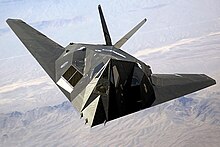
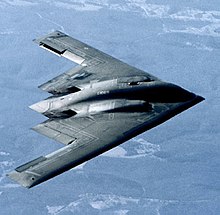




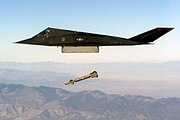
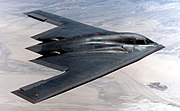


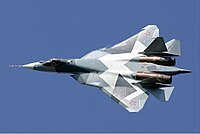



تعليقات
إرسال تعليق